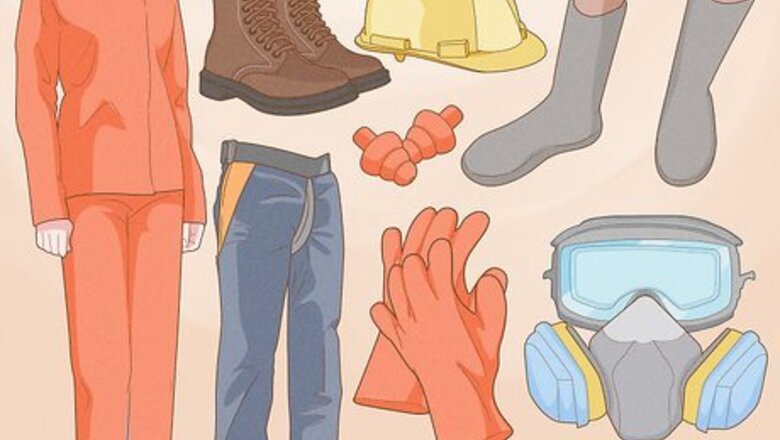
views
Felling a Tree
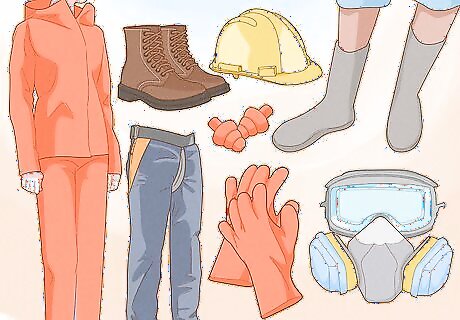
Put on safety equipment before you chop down the tree. To chop a tree down safely, you will need to take precautions to prevent injuries. Before you fell the tree, put on some or all of the following gear, depending on the size of the tree: Helmet Safety goggles Respirator Hearing protection Protective chaps (for larger trees) Steel toed leather boots, preferably with ankle support (for larger trees) Gloves Long sleeved shirt and pants
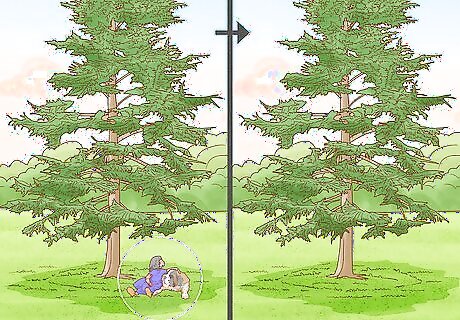
Clear the area surrounding the tree. Remove any children or pets from the area, and let adults know what you're doing so they can keep their distance. Everyone besides the person felling the tree should stay at a distance of least double the tree's height.
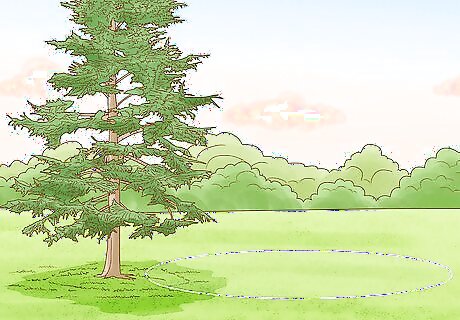
Determine which way the tree will fall. Choose the direction that would be most natural for the tree. If your tree leans slightly to the left, for example, chop it so it will fall to the left. Which way the tree falls determines how you will chop it so it is important to decide now.
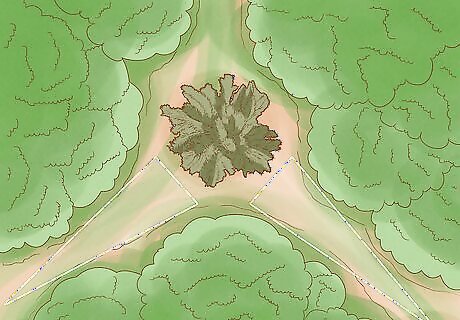
Plan 2 different escape routes in case of emergency. Make the first route your plan if the tree falls in the expected direction and the second if it falls in an unintended direction. If anything unexpected happens, having 2 routes ensures that you'll escape safely.
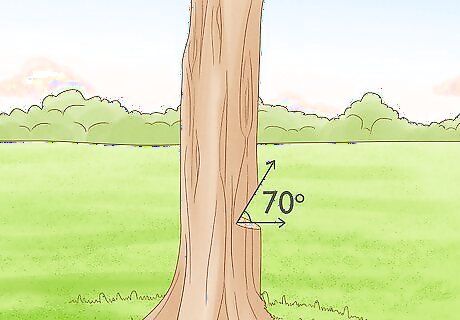
Make an angled cut into the side of the tree. Stand so that your left shoulder is touching the tree. Using a saw or axe, make a 70-degree cut facing the direction you want the tree to fall. Continue cutting until the cut is about ¼ of the tree’s diameter.
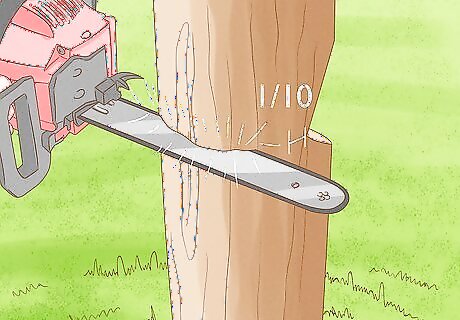
Turn your saw or axe sideways and cut horizontally. Make a horizontal back cut through the opposite side of the tree. Cut at as flat of an angle as possible to keep the fall even and predictable. Stop cutting when you have a hinge left that's about 1/10 the diameter of the tree. Leaving a small hinge ensures that you control how the tree falls. This is important as this will make sure it fall in the right way, not the wrong way as this could cause injury or damage.
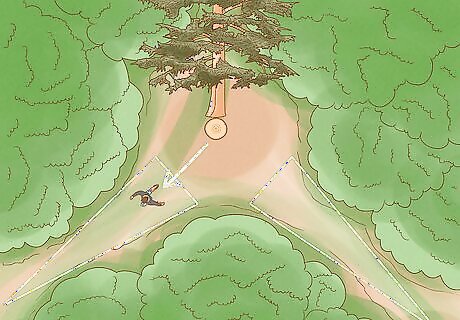
Make your escape route as the tree falls. When you've left the hinge, pull your saw or axe out and take your first escape route away from the tree. Do not return to the tree until it has fallen completely. If the tree falls towards you, take your second escape route away from the tree. If your tree is smaller or does not immediately fall over, push it on the hinge in the direction you want it to fall.
Taking the Stump Out
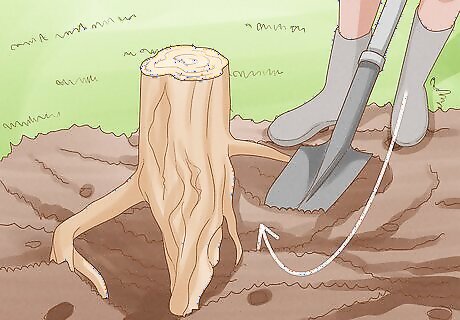
Dig your stump out by hand for smaller trees. If your tree is small, use a shovel to dig the stump out and expose its roots. Cut away the roots with an axe or root saw, then pull out the roots with a grub hoe. If you want to recycle the roots, compost them. If the stump is too large to remove with a shovel, you may need to try another method.
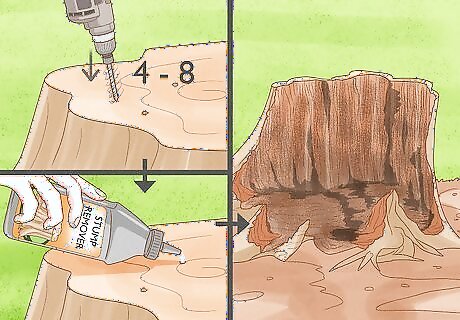
Try a chemical stump remover for the simplest method. If your stump is too large to dig out, drill 4-8 holes into the stump and pour chemical stump remover into each one. Wait 4-6 weeks for the chemicals to rot the stump, then dig it and its roots out with a shovel. Check the chemical stump remover's instructions for an exact time to wait between pouring the chemical in and digging out the stump.
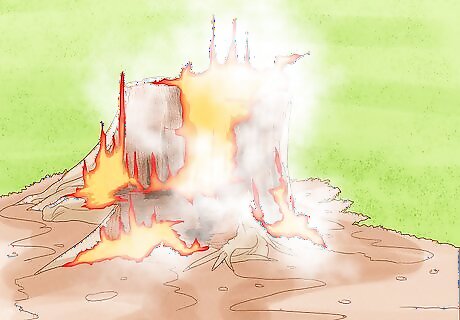
Burn the stump out if it's permitted in your area. Ask your local fire department if open burning is permitted. If it is, place scrap wood on top of the stump and set it on fire. Keep the fire burning until the stump has burned out entirely, then put it out and dig away the ash and roots with a shovel. Keep the fire attended at all times and have a fire extinguisher nearby in case of emergency.
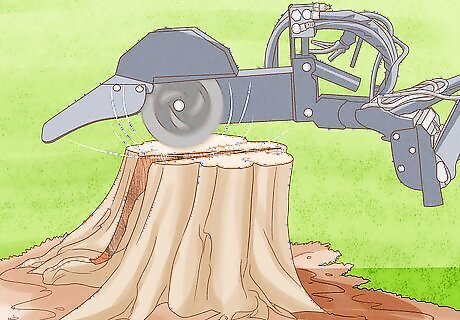
Use a stump grinder for the quickest method. Place the grinder over the stump and turn the machine on. Move the grinder around the circumference of the stump until it grinds the stump entirely. Shovel out any grindings left in the stump's hole, then fill the hole in with dirt until you cover it completely. If you don't own a stump grinder, rent one from a local home improvement store. Read the instruction manual carefully and put on safety equipment (gloves, goggles, and ear protection) before using a stump grinder.
Removing Small Trees for Transplant
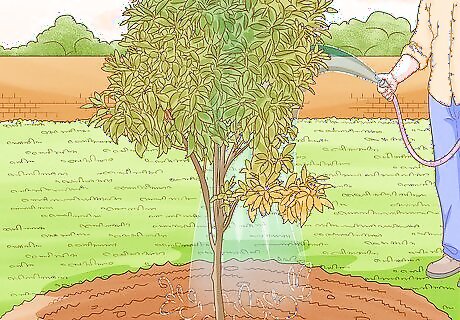
Water the soil surrounding the tree the day before you remove it. Take a hose and wet the ground directly around the tree until the soil is damp. This will soften the ground and make digging the tree out easier. It also reduces stress for the tree and keeps some soil attached to its roots.
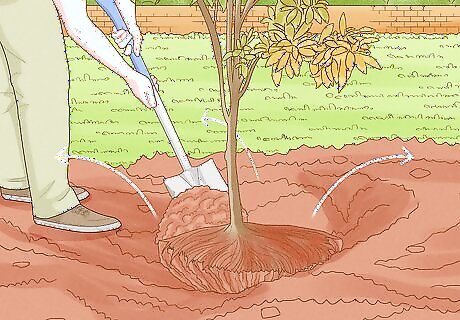
Remove the topsoil surrounding the top roots. Using a shovel, dig up the topsoil from the roots nearest to the trunk. Continue digging up the topsoil until you reach the approximate length of the tree's root ball. The root ball is the sphere of roots that you will replant in another location. As a general rule, there should be 10–12 inches (25–30 cm) of root ball for every 1 inch (2.5 cm) of the tree's diameter.
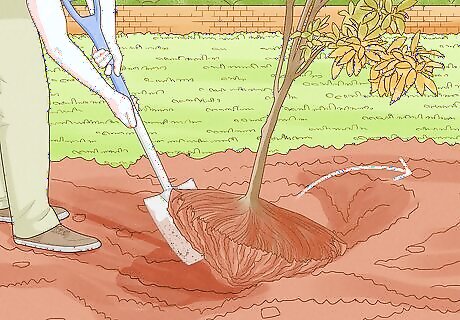
Dig the roots out with a spade. Keep the spade faced away from the tree as you dig. Shape the roots in a circle that will become the tree's root ball. Cut away any large roots that go beyond your mark with pruning shears. If you're planning on transplanting the tree you need to be careful not to remove too many roots. A general rule is for every inch in diameter of the trunk, there needs to be 10"-12" of root ball.
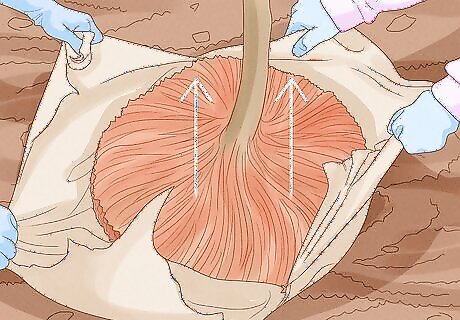
Dig underneath the root ball and pull it out of the ground. Lift the root ball up with your shovel and have another person work a square of burlap beneath the roots. Set the root ball back down and lift it out of the ground by the burlap. Keep the burlap tied around the root ball until you're ready to replant it. Burlap is important because it is biodegradable. It keeps the roots safe and together until you're ready to plant the tree and then decomposes into the soil afterward.



















Comments
0 comment